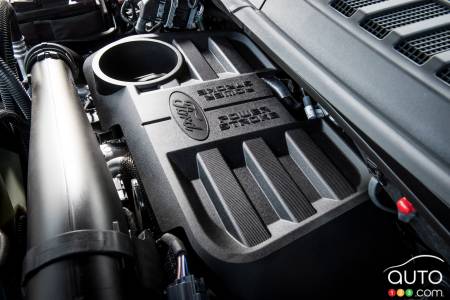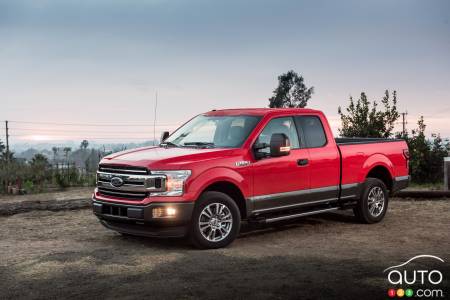Ford was the second American manufacturer to offer a diesel engine under the hood of its half-ton truck. The F-150 was so equipped a few years after Ram did it with their 1500 and a year before GM did the same with its Chevy Silverado and GMC Sierra models.
However, after only three short years, Ford is putting an end to the offering. Buyers can actually still order a Ford F-150 Diesel, but they’ll have to act fast. In the United States, orders stop being taken on Friday of this week.
The news that the F-150 is losing its diesel unit was first reported by the Ford Authority site, and then confirmed by The Drive. The raw numbers attached to the diesel-powered F-150 tell a story with a predictable ending: its 250 hp and 440 lb-ft of torque (with the 3.0L V6 Diesel) are not up to par.
In comparison, the 3.5L EcoBoost V6 gives the truck 400 hp and 510 lb-ft of torque. It also costs less than the diesel, and it can tow heavier loads, 14,000 lb versus 12,100 lb for the diesel-powered engine.

Since this year, Ford also offers a hybrid version, the PowerBoost, which uses the same V6 engine, but this time with an output of 430 hp and 570 lb-ft of torque. This edition can tow up to 12,700 lb. This variant outperforms the diesel-powered F-150 in the city, although on the highway it’s the reverse. Overall results are roughly similar.
Some enthusiasts will definitely miss the F-150 Diesel, which was an interesting addition to the lineup when it debuted in 2018. The Diesel engine offers a torque curve that is wider and easier to operate than those of the gasoline engines. Maximum power peaks at 3,250 RPM, maximum torque at just 1,750 RPM. With either gasoline engine, you have to crank the tachometer up to 6,000 RPM to get the full power, and at least 3,000 RPM to get the maximum torque.
While we’ve known for a while that the days of the gasoline engine are numbered, that’s even more so for the diesel engine, at least when it comes to passenger vehicles. The trucking industry is likely to follow its own path, at least in the short and medium terms.



